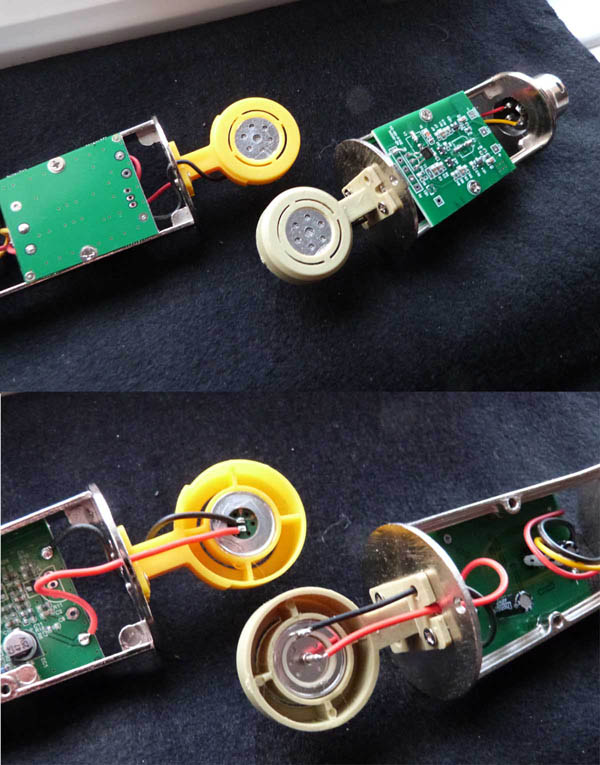mhelin said:
.....
The other BM-800 mic modded had the single resistor added and the filtering (between FET and the phase splitter PNP) removed. It was clean and loud but didn't sound as nice (boxier sound, more distortion), changing the FET didn't help either. It might be the capsules vary in quality quite a lot.
Did you verifiy that the zener-voltage is 9,1V (and not only 3,1V) ?
Khron said:
I don't suppose you've tried the "charge amplifier" configurations that Henry Spragens tested, have you?
.....
As far as I understand it, mhelin is using the original 16mm "small" capsule, which is an electret capsule (TSB-160A and clones).
Khron said:
http://audioimprov.com/AudioImprov/Mics/Entries/2015/12/20_Modding_a_BM-800_Mic.html
"The large capsule is more sensitive than the small one which shipped in the mic, and it will overload the input FET unless measures are taken. The K596 FET which is usually used in these mics has diodes protecting the gate, and they will begin to conduct at high signal levels....."
This guy obviously doesn't know what he is talking about. First of all I doubt that a capsule is able to deliver 1,3Vss under normal conditions and then this guy doesn't know anything about the BM-800 circuit.
The diodes are not a speciality of the 2SK596, they can be found in every FET designed for electret-capsules since more than 30 years.
If you look at the datasheet (and/or take measurements) you will know that the FET will draw about 200µA idle current. 200µA across the drain-resistor of 2k2 means a voltage drop of only about 440 mV. The gate diodes will conduct at 650mV. That means the FET's drain will see the power supply limit long before the diodes will start conducting. Solution: increase the value of the drain resistor.
Khron said:
"So C12 is added, converting the circuit to a “charge amplifier”....."
This so called "charge amplifer" is nothing new and is used by Sennheiser e.g. in their ME80 since at least 33 years.
Khron said:
C12 feeds back a charge opposing that coming from the capsule, and keeps the FET gate at ground potential."
Interesting, he doesn't explain how this is achieved when the drain is at 7,8V. The 2SK596 has already a built-in-resistor in parallel to the diodes between gate and source. As long as the source is connected to ground, the gate already will be at ground level too, via this resistor and without any feedback capacitor.
Yes, this resistor is only 25MOhm. Obviously this low value is sufficient for an electret capsule, but I leave it open to everyone to make his own conclusions how this loading will affect a polarized LDC.





































